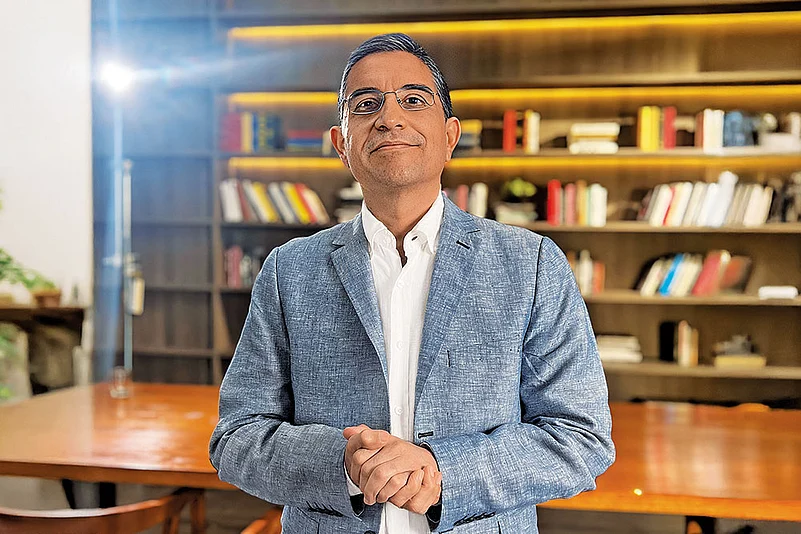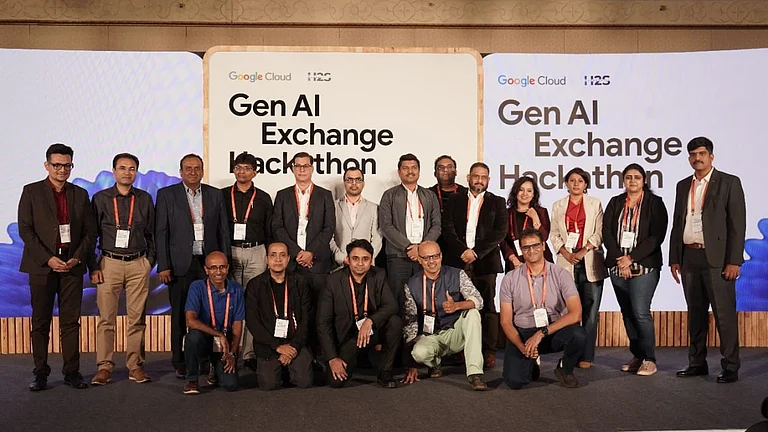How do you see the future of the creator economy in India?
The creator economy originated on YouTube and today, YouTube is truly home to India’s sizable creative entrepreneur community. Over 1,10,000 channels, in India, have more than 1,00,000 subscribers as of December 2023. In fact, a staggering 93% Gen Z fans in India use YouTube to engage with the person or thing they’re a fan of at least weekly.
In 2023 alone, our creative ecosystem contributed over Rs 16,000 crore to India's GDP and fuelled over 9,00,000 full-time equivalent jobs. YouTube’s burgeoning Indian creator economy is reshaping content creation, fostering entrepreneurship and creating new livelihoods.
How does Gen Z’s content consumption differ from millennials and older demographics?
Today, when people go home and sit on their couch to ‘turn on the TV’, they’re turning on YouTube. This is especially true for this new generation, who watch far less cable and linear TV, and far more creator content.
Gen Z also is a generation that grew up with smartphones and tablets, so we continue to invest in our mobile-creation tools. The gen AI tools being built today will empower the next generation of storytellers.
According to research by Google/SmithGeiger, in India 77% of Gen-Z fans are part of a fandom with a “name”. YouTube has made it easier than ever to find your tribe, no matter how niche your interest.
What are some of the innovations YouTube has rolled out?
Today, YouTube is currently the only destination where creators and artists can lean into all forms of content creation such as long-form, Shorts, podcasts and Live. They can earn from 10 revenue streams—ads, subs, Shopping, fan-funding models like memberships, Super Chat, Super Thanks, Super Stickers, BrandConnect, Shorts monetisation and paid courses.
YouTube has always been a destination for product discovery. From the OG unboxing videos and shopping hauls to gadget reviews, DIYs and get-ready-with-me videos, viewers have long relied on their favorite creators for authentic product recommendations.
This is especially true in India, where 65% of consumers in metro cities find YouTube creators more trustworthy than traditional celebrities. This vibrant ecosystem of communities has set the stage for a new era for YouTube Shopping, which we rolled out in 2024.
Community Posts allow creators to maintain regular engagement beyond video content, while Vertical Live makes going live from mobile devices more intuitive.
We are witnessing a significant surge in aspiring creators from Tier-II and Tier-III cities, reflecting the democratisation of content creation
With the advent of AI, how has content creation changed?
AI is making high-quality content production more accessible, even for those without advanced technical skills. It automates repetitive tasks, streamlines workflows and allows creators to focus more on ideation and storytelling. From enabling personalised content to supporting formats like virtual avatars and AI-generated music, AI is unlocking new creative possibilities.
In the education space, AI is enhancing learning on YouTube through features like Key Concepts, which highlights important topics and pulls definitions from Google’s Knowledge Graph. In India, the AI Skills House programme is promoting AI literacy with free courses in seven Indian languages. Interactive tools like Quizzes help creators boost engagement and reinforce learning.
AI-driven tools like YouTube’s auto dubbing are revolutionising content creation by breaking language barriers. In India, multilingual creators and edutainment partners are rapidly gaining momentum with this feature.
Has the number of creators and influencers from Tier-II and Tier-III cities increased? How do they differentiate themselves in the digital space?
Absolutely, we are witnessing a significant surge in aspiring creators from Tier-II and Tier-III cities, reflecting the democratisation of content creation. These creators often incorporate their native culture, languages and traditions, proving to be a powerful differentiator.
The language of YouTube is becoming everyone's mother language, with content spanning languages and dialects like Kokborok, Santhali and Chokri. We're seeing content in Marathi, Punjabi, Haryanvi, Bhojpuri, Bengali and various dialects from regions like Bellary, Godavari, Malappuram, Kanyakumari, Sivaganga and Madurai bringing a distinctive yet diverse regional flavor.
This allows creators to celebrate their history, traditions and unique local quirks, connecting with a wide diaspora. For example, YouTube is a hub for Kerala automobile enthusiasts, with BusTubers like NAZRU VLOGGER 2.0. Indian Farmer is revolutionising farming with up-to-date techniques.
What are the trends that will shape the next phase of the creator economy?
First, the rise of what we might call "Fandom 2.0". Fandoms are becoming more layered, diverse, inventive and creators who understand and harness the energy of their fan communities will be the most successful.
Fans aren't just passive viewers; they’re making themselves seen, heard and felt. They're active participants who are shaping the conversation, forging communities and blurring the lines between fans and creators.
Second, the hyperlocalisation of content will continue to fuel growth, with regional content, music and storytelling resonating deeply with audiences.
Third, creators will increasingly embrace multi-format creativity, diversifying their storytelling across short form, long form, live streams and podcasts to cater to different audience needs and preferences.
And, finally, AI-powered tools will improve productivity, empowering creators to execute ambitious and complex ideas with greater speed and higher production value.












